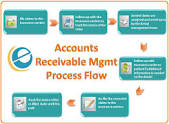Receivables Management in Financial Institutions/ Non-Banking Financial Institutions/Banks at Academic Research Writing Services
Agenda:- 1) Introduction
2) Credit Management 3) Assets Repossessions & disposals
4)Mortgages
5) Legal Implications
6) Aging Analysis
7) Follow-up Report
8) Agency Management
9) Review
10) Debtors Planning & Actions Taken
11) Conclusions
Introduction & Credit Management
- Credit Evaluation which includes credit worthiness of customers for Retail Assets as well as Corporate.
- Documents required for checking:-For Corporate-Profit & Loss & Balance Sheet analysis, Ratio Analysis, References check with Bankers, past track record in the market, feedback checking etc. Working capital requirement forecast. For Individual -Retail customers ,the following documents required: any property document like LIC Policy, Any assets ownership ,Bank Statement past six months, Repayment track record if any loan taken from any other financial institutions, Electricity Bill or telephone Bills, Property tax if it is agricultural base then Extact-7 form required. If it is rented house, then rental agreement along with guarantors.
- Customers should be divided into four categories namely No.1) Good customers. No.2) Bad customers No.3) Doubtful customers No.4) Slightly Risky customers.
- Exchange of Information through Industry wise Credit Negative Bureau for defaulter customers. Either sharing information from other financial institutions.
- Issuance of Public Notice in the Local newspaper for defaulter customers.
- 138 should be implemented for cheque bouncing.
-
Assets Repossessions & Disposals & Mortgages
- Customers which is more than 3 instalments Outstanding then his Assets is
- Seized by the Banks or financial institutions by issuance seizing letter to the
- Agency for Seizing. Then seizure of the Products made.
- After seizing the Products,it is disposed off after issueing proper notice to the customers.
- If the customers has got agricultural lands huge in his name, although he is
- A big defaulter of the bank or financial Institutions, in that case a Mortgage
- Deed is prepared in his name & kept by the Bank.
Legal Implications
- Sec. 138 should be made for cheque Bouncing.
Summons should be served to the customers through local Police StationsTo the defaulter customers.
- Sec.156 should be implemented through court for Possessions of the vehicles through court.
- Sec.9 should be implemented for attachment of the Property through court.
- 406 should be implemented for breach of trust.
- Sec.420 should be implemented for cheating /fraud.
So Proper receivables Management should be effective with the help of
Legal Deptt.
- Aging Analysis:- This report is based on customers due on Number of days
i.e. >30 days, >60 days, >90 days & above. With that report ,Collection Executives should visit to the customers for recovery of outstanding.
- Follow-up Report:- With this report, Agency has to follow-up with the customers for recovery . Telecalling should be made to the defaulter Customers on the basis of this reports.
- Agency Management:- Each & every Banks and financial institutions has to recruit Agencies with proper manpower on the basis of number of cases allotted to each Agency. So, Proper Agency Management by the Collections Manager is the good step for Receivables Management.
- Review:- It has to be taken from each Agency on case to case basis by the Recovery Executive or by the Collections head by the Bank. Agencies performance can be judged on the basis of Review. Renewal of Agencies Can be made on the basis of this or Agency can be terminated for nor-performance.
- Debtors Planning & Actions Taken:- Mapping of debtors is the first step for debtors Planning. Field Credit Investigation should be made on strong basis. Recruitment of good Agencies. Plan of Actions should be taken for the month for effective Receivabels Management which are mentioned below:-
- Collection Target should be set for each month for a particular regions or Branches & it should be achieved, no shortfall is accepted.
- Repossessions of Assets should be mandatory.
- Disposal of Re-possessions of seized assets with in the time frame.
- Effective Telecalling systems should be implemented.
- Branch performance review should be conducted on monthly basis for
Effective Receivables Management.
6) Frequent Field Visit should be necessary for chronic defaulters by the topofficials of the Bank or financial institutions.Recovery Channels like Post Office, sub-dealers/Dealers appointing as collection agent.
- Conclusions:- A sale is not completed until & unless the money is recovered or collected from the customers i.e. Receivables Management for Financial institutions/Non-banking Financial institutions/Banks /Telecom Industries.
- See more at http://www.findtutoronline.net/blog
- Suggestions & feedback are most welcome.

